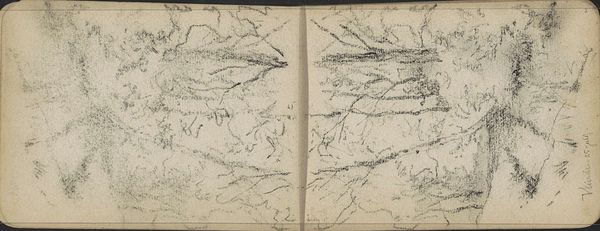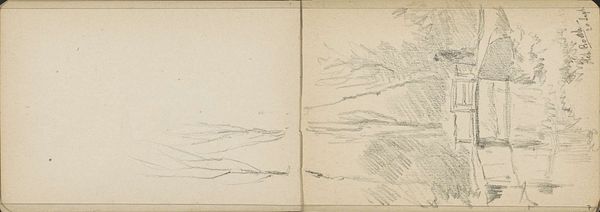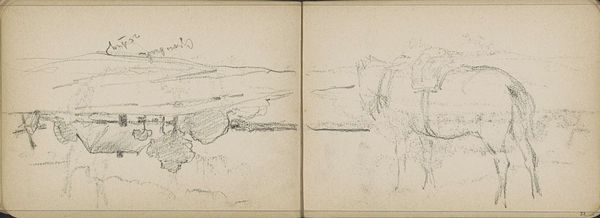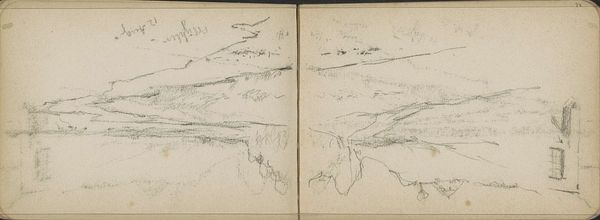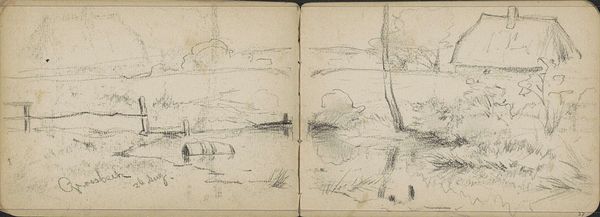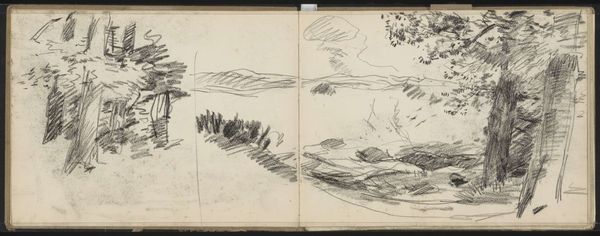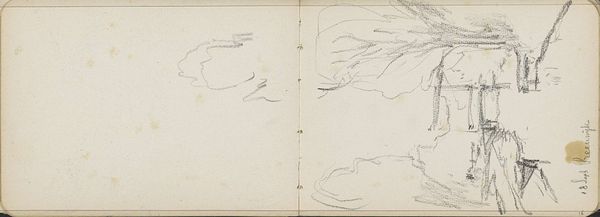
Dimensions: height 113 mm, width 159 mm
Copyright: Rijks Museum: Open Domain
Editor: This is "Bridge over a Creek near Steenbergen," a pencil drawing by Willem Cornelis Rip, made between 1896 and 1897. I'm really struck by how raw it feels. It's like you're right there, sketching alongside him. What visual stories or impressions do you gather from a piece like this? Curator: Look at how Rip uses the bridge itself. A bridge is almost universally symbolic, isn't it? It signifies transition, connection, a way across something potentially dangerous. He seems to invite us to cross the creek into... what, though? The right side feels much denser, more foreboding than the left. It raises questions about the destination, the unseen. Editor: That's interesting. It hadn’t occurred to me to read the bridge as more than just a bridge! Curator: And look closer, the very sketchiness, the visible pencil lines--what do they trigger for you? Does it feel resolved, or in process? Remember, late 19th-century art grappled with fleeting moments, a sort of subjective reality... does this sketch participate in that visual language? Editor: Definitely in process. It doesn't feel polished. So, is he trying to capture the feeling of being *on* that bridge, caught between two places, rather than presenting us with a finished thought? Curator: Precisely! He provides a kind of symbolic ambiguity through his technique, that’s palpable. Editor: Fascinating. I never would have considered the weight carried by seemingly unfinished sketches. Thanks! Curator: My pleasure! I am intrigued now to delve more into the cultural meanings behind his art.
Comments
No comments
Be the first to comment and join the conversation on the ultimate creative platform.
